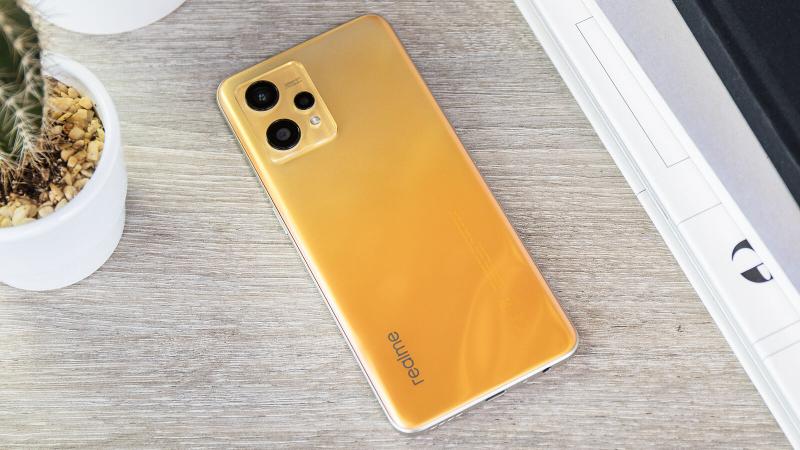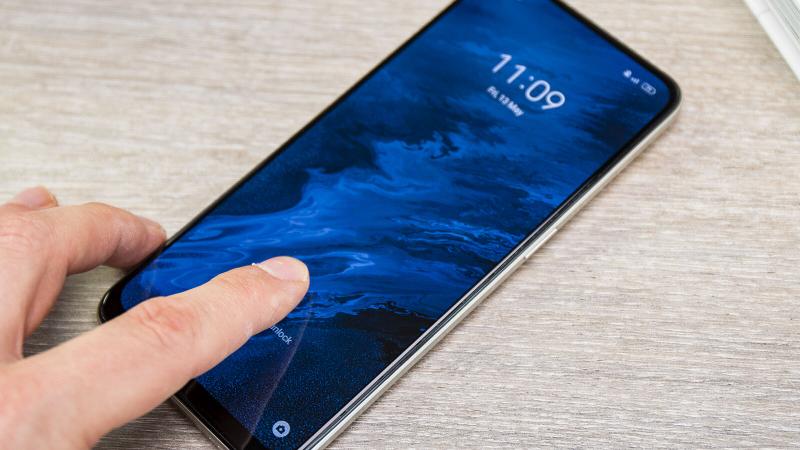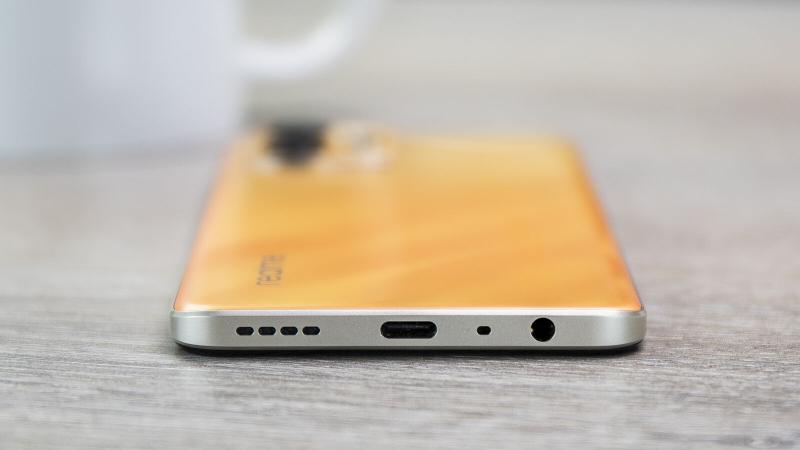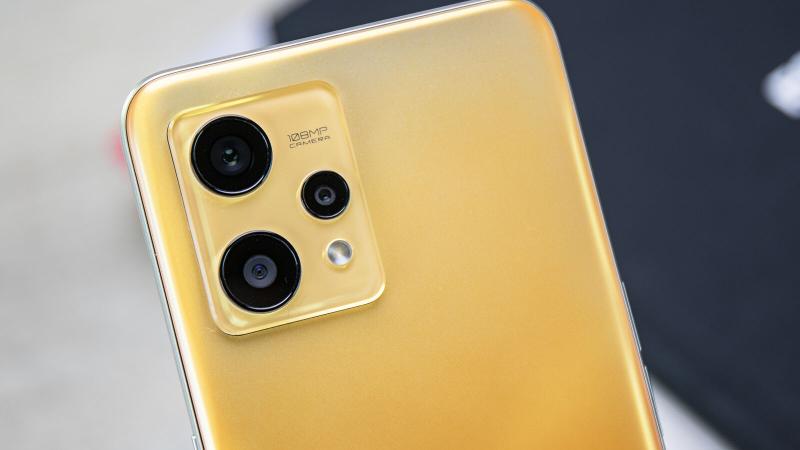Let’s take a quick overview:
Pros
- Impressive 90Hz OLED display
- Excellent battery life
- Solid cameras
- Premium look and feel
Cons
- Sluggish performance at times
- Terrible in-display fingerprint sensor
- No 5G
Our Verdict
An impressive display, battery life and cameras make the Realme 9 a solid budget option. But if great performance is a priority for you, your money will be better spent elsewhere.
It’s hard to believe the very first Realme phone was released as recently as 2018. The company has released a staggering 44 phones in just four years, although not all have been available globally.
However, the latest Realme 9 series is well represented in the UK and Europe. Five of the six handsets have made it to these shores, including the regular Realme 9. At £249/€279, it’s still just about in budget phone territory, but the Realme 9 5G is available for the same price.
The standard model is limited to 4G but offers some better specs elsewhere. Is that enough to make it a realistic option, or should you opt for one of the many great alternatives around this price? I spent a few weeks with the Realme 9 to find out.
Design & build
- Premium build, despite plastic back
- Relatively compact and lightweight
- Frustrating fingerprint sensor
The Realme 9 might be a budget phone, but its bold design is sure to turn heads. That might not be apparent from the front, but flipping it over reveals the eye-catching plastic finish. It’s glossy and reflects and shimmers in a way that imitates glass, but without the increased weight or fragility.

The effect is instantly visible on the vibrant ‘Sunburst Gold’ model I tested, but you’ll still notice it on the ‘Stargaze White’ and ‘Meteor Black’ versions. I initially found this annoying, but it grew on me during my testing time. Not everyone will find it aesthetically pleasing, though, and you’ll need to go case-free to see the full benefit.
The durable plastic back meant I wasn’t too worried about damaging the phone. Even before applying the tinted silicone case included in the box, it offers plenty of grip.
I also appreciated Realme’s decision not to include its ‘Dare to Leap’ slogan in big letters on the back of the phone. That’s something we’ve seen in the past, but the smaller Realme logo here is much more tasteful.
Above it, you’ll find triple rear cameras and a flash within a clear module. This only extends slightly from the back of the phone, meaning there’s not too much movement when using face up on a table.

By 2022 standards, Realme has opted for a traditional design on the front. The only real feature of note is the punch-hole for the selfie camera in the top left corner. I usually prefer a central placement, but quickly got used to this layout. It’s highly unlikely to ever obscure crucial information there.
The Realme 9 also has an optical in-display fingerprint scanner, but I wish it didn’t. Enrolling is easy enough, but I consistently struggled to unlock the phone this way. Less than half of my attempts were successful, and even then it was much slower than many other phones. It left me relying on the less secure face unlock, which isn’t ideal.

Slim bezels can be found on the top and sides of the phone, but the phone still has a large chin.
There’s not much to write home about on the sides of the phone, with volume controls on one side and power button on the other. Annoyingly, the latter triggers the Google Assistant rather than power controls by default, but this can easily be changed in Settings.
A USB-C port and downward-firing speaker can be found at the bottom, alongside a 3.5mm headphone jack. It’s rare to see the option to connect wired headphones these days, but I appreciate its inclusion here.

Despite the large display, Realme 9 remains impressively compact. At 8mm thick and 178g, it’s one of the most portable and pocketable big-screen phones around.
Screen & speakers
- Full HD, 90Hz OLED display
- Excellent, rich viewing experience
- Single speaker is underwhelming
Display is where the Realme 9 really excels. It’s a 6.4in, 1080×2400 panel, swapping out LCD on the 5G model for superior OLED here. The screen sticks at the typical 20:9 aspect ratio, with those slim bezels giving it a respectable 84.2% screen-to-body ratio.
As those specs suggest, the Realme 9 delivers an excellent viewing experience. You get vibrant colours, deep blacks and plenty of detail – you can’t ask for much more at this price. The screen also gets fairly bright (up to 442 nits in testing), making it generally visible unless you’re in direct sunlight.

The only compromise is a 90Hz refresh rate, as opposed to 120Hz on the Realme 9 5G. However, this shouldn’t be too much of a cause for concern, and it still provides a noticeable benefit compared to the standard 60Hz. Just make sure you turn it on in Settings.
As I alluded to, the Realme 9 has a single downward-firing speaker. It doesn’t combine with the earpiece for a stereo setup and the results reflect that. Despite getting impressively loud, the phone lacks bass and is prone to distortion at higher volumes. It’s fine for social media and the occasional YouTube video, just not much more.
Specs & performance
- Powered by Qualcomm’s Snapdragon 680
- Combines with 8GB of RAM and 128GB of storage
- Fine for everyday use, but sluggish at times
Given all the focus on 5G these days, it’s easy to forget that Qualcomm is still making new 4G chips. They include 2021’s Snapdragon 680, which powers the Realme 9. The top-spec model I tested pairs it with 8GB of RAM, but a cheaper configuration drops it down to 6GB.
Performance from the phone is… fine. I’ve tested several high-end Snapdragon 8 Gen 1 phones recently so don’t want to be too harsh, but the Realme 9 feels sluggish at times. It’s most noticeable when opening/closing apps or multitasking, with significant delays between tapping the screen and it actually performing the action.
The situation improves once the apps are open, but you’ll need to allow a few more seconds to get set up each time. You can expect this from a cheap phone, but other handsets around this price deliver better performance.
If you just need a phone for the basics – think calls, messages, web browsing and social media – this phone will still serve you well. Casual gaming is also within reach, but there’s noticeable dropped frames on anything more demanding. If you’re buying a phone for the likes of Call of Duty: Mobile or Asphalt 9, you should look elsewhere.
This lacklustre performance is reflected in the benchmarks below, where many similarly priced phones perform better across a range of tests:
There’s only one option when it comes to internal storage: 128GB. That might feel a bit on the low side, but the Realme 9 does support expansion via a microSD card.
As mentioned above, the phone is limited to 4G connections, so if you know you want faster 5G speeds then you will have to look elsewhere.
Cameras
- 108Mp main sensor is impressive
- 8Mp wide-angle and 2Mp macro poor by comparison
- Great 16Mp selfie camera
Gone are the days when budget phones could get away with sub-par cameras. That’s evident on the Realme 9, which has a 26mm main sensor at 108Mp. A higher megapixel count rarely equals better photos, but you’d usually only see this sort of lens on flagships.
Stills from the primary camera are impressive, offering decent colour accuracy and impressive dynamic range. It’s particularly adept at landscape shots, but can struggle with exposure where there’s less natural light.
Unfortunately, there’s a noticeable drop in quality when switching to the 8Mp ultrawide lens. Colours look more washed out and details in the background are often lost. It’s nice to have the flexibility of a 120° field of view, but I wish Realme had made all the lenses of comparable quality.

The third of these is a 2Mp macro camera, which adds almost nothing to the experience. Even with the dedicated mode activated, it struggled to properly focus on close-up shots.
Without a telephoto camera, the zoom feature is all digital. That means the quality drops sharply the further you go, with the max 10x producing blurry, grainy images that are only usable for reference purposes.
There’s no depth sensor either, but you will find a software-based portrait mode. It can produce some nice results at times, but consistently struggles with edge detection.
Another camera feature that relies on software is night mode. The Realme 9’s version does a good job of brightening low-light environments without sacrificing too much detail.
However, the 16Mp front-facing camera is a pleasant surprise. It delivers bright, detailed selfies that handle exposure well. Portrait-style images are available here too, and I was really impressed by the realistic background blur it produced.
A wide range of camera samples are available in the gallery below:
On the video side, the Realme 9 can capture footage up to 1080p at 30fps. This is fine for most people, especially with optical image stabilisation (OIS) on the main lens keeping video relatively steady when you move around.
Battery life & charging
- 5,000mAh battery
- Excellent battery life, even at 90Hz
- Decent 33W wired charging
Battery life is an area where some budget phones make compromises, but that’s not the case here. The Realme 9 has a large 5,000mAh cell, which comfortably delivers a full day of moderate usage from a single charge. Depending on your usage patterns, it may be possible to eke out two days before reaching for the charger.
That’s reflected in Geekbench 4’s battery test, which serves as a measure of screen-on time. With the brightness set to 120 nits, the Realme 9 lasted an impressive 13 hours and 30 minutes.
Everyday usage will deplete the battery more quickly, but it’s still one of the longest lasting phones I’ve tested in a long time. And remember, that test is at 90Hz and with no battery saver mode turned on. Adjusting these settings will prolong battery life even further, especially with the phone’s solid standby time.
When you do need to charge it, the 33W USB-C adapter in the box will give you 27% back in 15 minutes. Reaching 50% in 30 minutes is consistent with Realme’s claims, and is at the upper end of what you’ll find on phones this price. It would’ve been nice to see wireless charging too, but that’s still not particularly common on budget phones.
Software & updates
- Realme UI 3.0 over Android 12
- Custom skin has a few notable differences
- Eligible for at least two Android version updates
The phone runs the custom Realme UI 3.0 skin over Android 12. Realme’s approach to software is slightly different to Google’s, with notable changes to quick settings, the app drawer, and camera app. All feel intuitive and easy to navigate, but there’s a definite learning curve if you’re coming from a Pixel or Samsung phone.
Realme has also decided to include its own versions of many stock apps, including image gallery, voice recorder and calculator. None of these can be uninstalled, meaning you may be stuck with excess software you won’t ever use. Plenty of Android phone makers are guilty of this, though.

Realme says the phone will get two Android updates and three years of security updates. That means the Realme 9 will get Android 13 and 14, but that might be it – though that’s still just about the best software support you’ll find at this price right now.
Price & availability
Realme has kept things simple with pricing for the Realme 9 in the UK and Europe. There’s just one configuration available – 8GB of RAM and 128GB of storage – for £249/€279.
It’s available to buy directly from the Realme website, where you’ll currently get a free pair of Realme Buds Q wireless earbuds.
The Realme 9 is unlocked so available to use with all UK networks, but there’s no availability in the US at all.
At that price, it’s still just about in budget phone territory. However, competition is fierce at this price point. Xiaomi leads the way here, with the Poco X3 Pro, Redmi Note 10 Pro and Poco M4 Pro 5G all available for a similar amount. But handsets such as the Samsung Galaxy A13 or Oppo A54 5G are also worth considering.
Verdict
In ditching 5G, the regular Realme 9 delivers a solid all-round smartphone experience.
The 90Hz OLED display is a joy to behold, while battery life is among the best you’ll find on any smartphone. A decent camera is capable of some excellent shots, while I really enjoyed the premium design and lightweight build.
But hit-and-miss performance takes the shine off the experience, while the software and in-display fingerprint sensor could both be better.
It’s the best phone in the Realme 9 series for most people, but that doesn’t mean you should buy it over some other great handsets available for a similar price.
Specs
Realme 9: Specs
- Android 12 with Realme UI 3.0
- 6.4in Full HD+ (1080×2400) OLED display, 20:9, 90Hz
- Qualcomm Snapdragon 680 (4G)
- 6/8 GB RAM
- 128 internal storage (expandable via microSD)
- 108Mp main, 8Mp ultrawide, 2Mp macro cameras
- 16Mp selfie camera
- Fingerprint scanner (in-screen)
- Bluetooth 5.1
- GPS
- USB-C
- 5,000mAh battery
- 33W wired charging
- 160.2 x 73.3 x 8mm
- 178g













